A Japanese style kitchen radiates calm simplicity and mindful design, enveloping you in an environment where tradition meets modern functionality. Drawing from Japan’s rich cultural heritage, these kitchens emphasize clean lines, uncluttered spaces, and natural materials to evoke a serene atmosphere. With each element thoughtfully curated, you experience the balance between aesthetics and practicality. The beauty of these kitchens lies in their attention to detail and the harmonious blend of minimalism and functionality. Let curiosity draw you into exploring 22 Japanese Style Kitchen Ideas that transform everyday cooking spaces into peaceful sanctuaries.
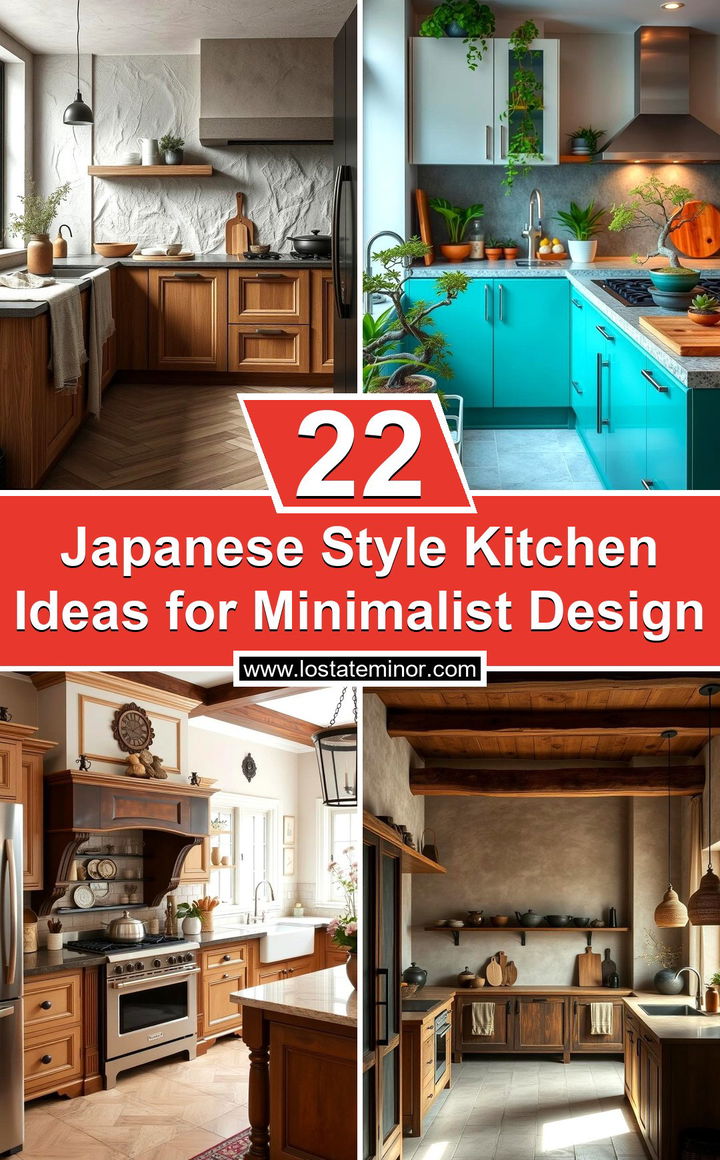
1. Minimalist Layout and Clean Lines
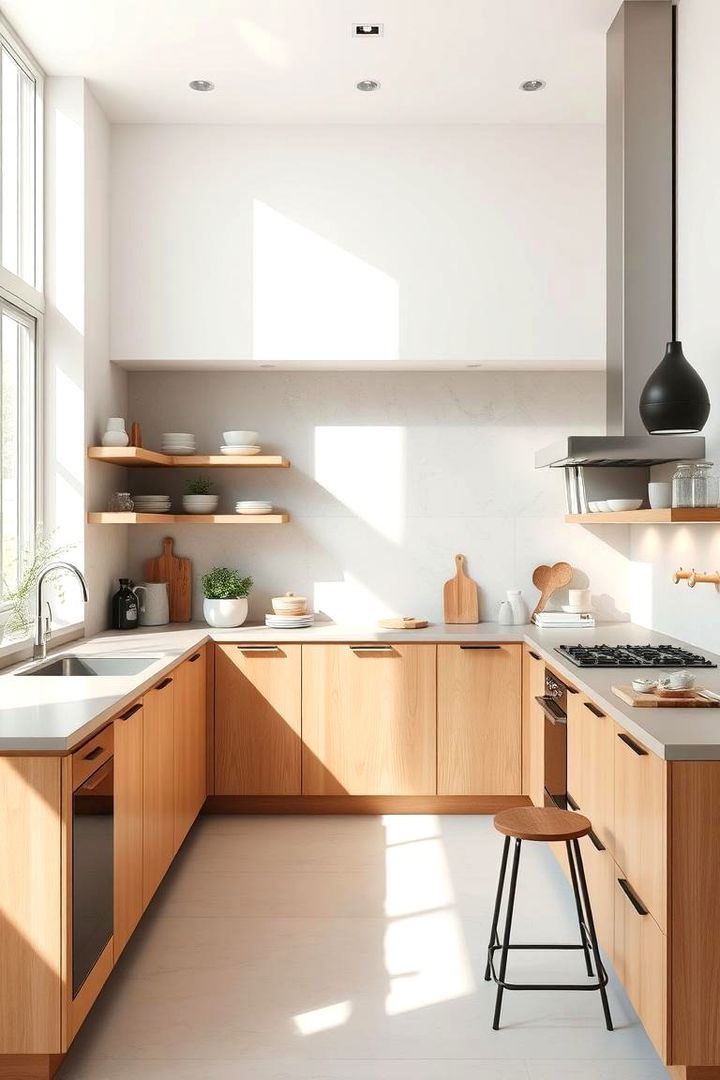
A crisp and inviting ambiance unfolds with a minimalist layout that celebrates clean lines and uncluttered surfaces. This design focuses on simplicity, allowing each element to shine without overwhelming distractions. The practical benefits include enhanced functionality, effortless cleaning, and a visually spacious environment. It encourages subtle elegance, where every piece serves a purpose. Homeowners enjoy stress-free organization and a timeless aesthetic that adapts to modern life while honoring traditional values. Embracing minimalism infuses each space with clarity and purpose, fostering a serene cooking atmosphere.
2. Natural Materials and Wood Accents
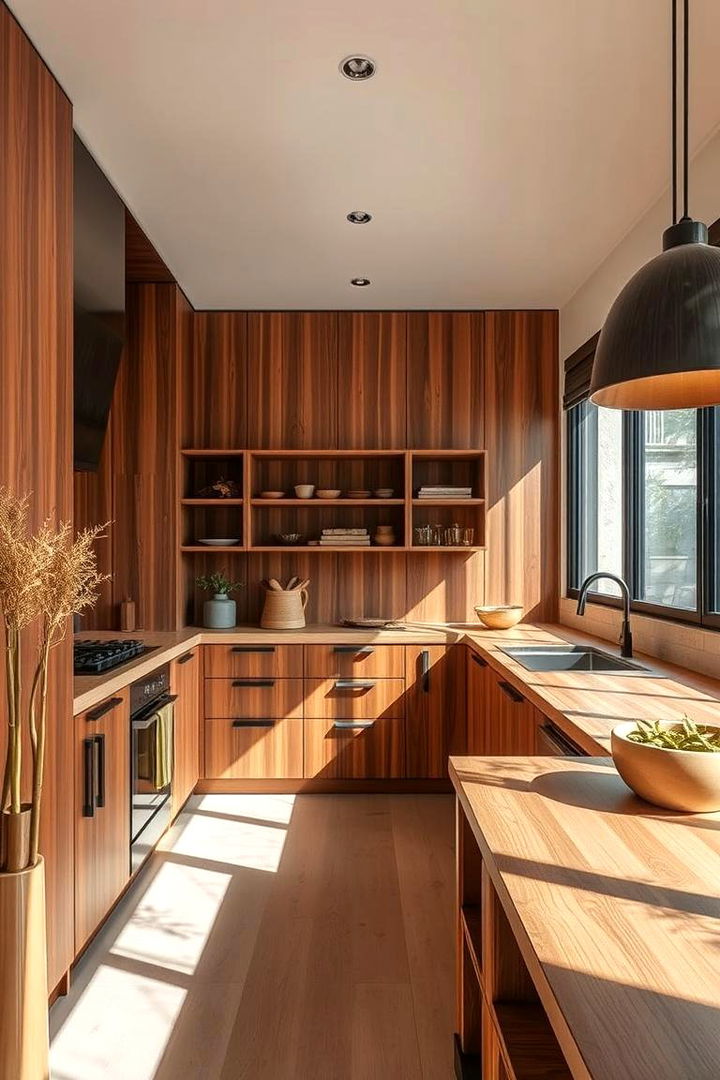
With warm wood accents and organic textures, a Japanese style kitchen exudes a grounded elegance. Natural materials like bamboo, cedar, or reclaimed wood infuse the space with an earthy feel that connects to nature. Their durability and timeless beauty add both environmental and aesthetic benefits. The tactile charm of wood elements creates a harmonious balance with sleek modern features. This design aspect naturally invites calmness and relaxation while boosting energy efficiency. Whether used on cabinets, countertops, or decorative panels, they transform the kitchen into a haven of natural artistry and sustainable living.
3. Neutral Color Palette

A soothing array of neutral tones dominates the space, forming a canvas that highlights subtle textures and delicate accents. Soft whites, beiges, and greys create an atmosphere of calm and clarity, encouraging relaxation and focus during meal preparation. This color strategy enhances the feeling of space and light, harmonizing with the natural materials in the kitchen. Today’s homeowners appreciate this approach for its versatility and timeless style. The neutral palette also allows for occasional pops of color through decorative items, offering a perfect blend of tradition and modernity in a Japanese style setting.
4. Zen-Inspired Ambiance and Simplicity

Imagine a sanctuary of calm where every element is chosen with purpose, igniting a Zen-inspired ambiance that infuses serenity into daily routines. This design prioritizes balance and mindfulness, offering spaces for both work and meditation, merging culinary functions with spiritual distractions. The use of simple, organic forms elevates functionality while promoting inner peace. Enjoy the practical benefits such as reduced visual clutter and enhanced focus. This approach makes the kitchen not merely a cooking area but a personal retreat celebrating tradition, simplicity, and the art of living mindfully.
5. Efficient Storage Solutions
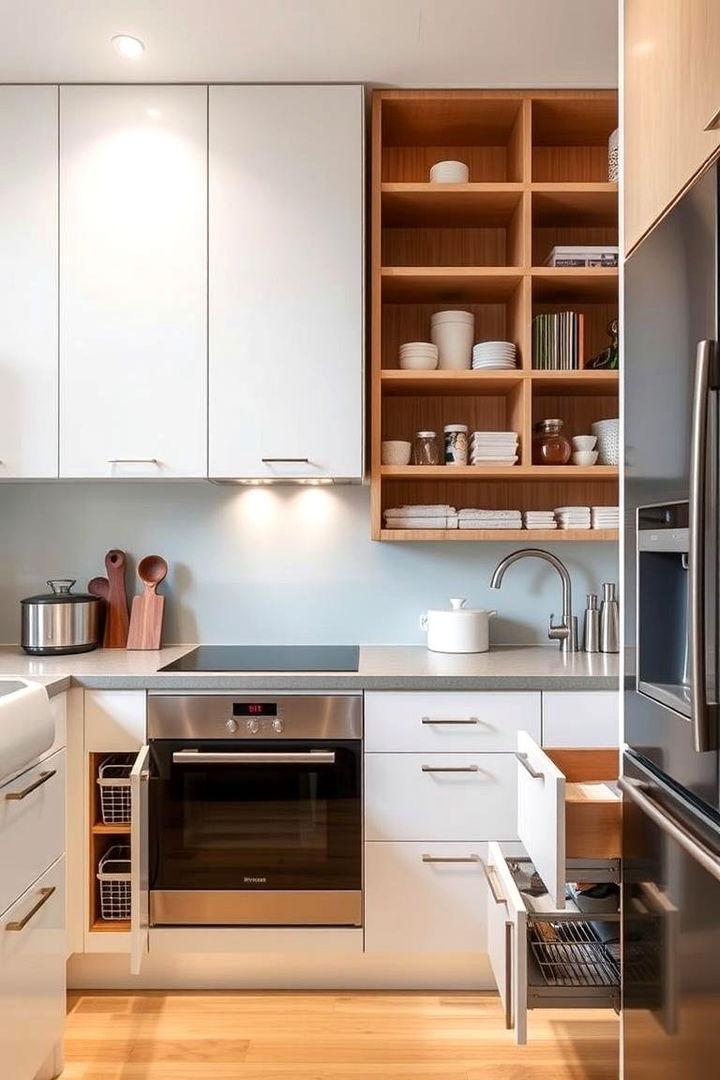
Helping you maintain an immaculate space, efficient storage solutions are central to Japanese kitchen design. Clever built-in cabinets and hidden compartments ensure that cooking essentials are always within reach yet out of sight. This system enhances room functionality and organization, making daily tasks smoother and more enjoyable. Every storage idea is designed to eliminate clutter and optimize every inch of space. It transforms chaos into calm, reflecting a philosophy of orderliness and simplicity that is crucial in Japanese culture. Embrace this system and feel inspired to simplify your life while maximizing utility.
6. Integrated Appliances for a Streamlined Look
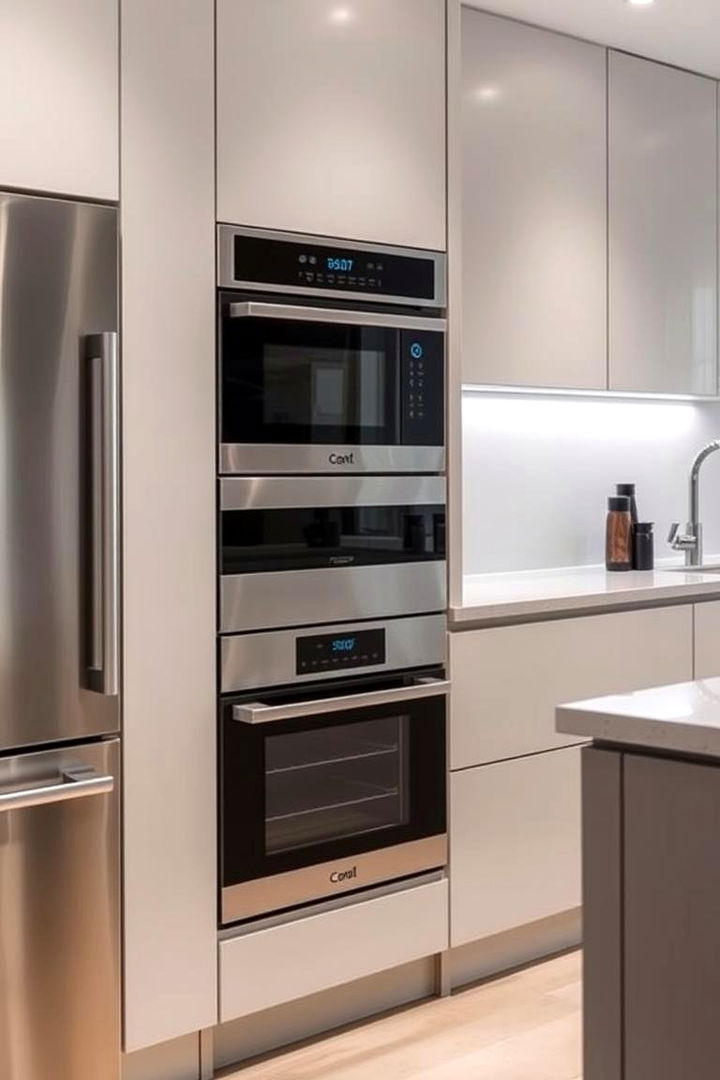
A sleek fusion of form and function comes to life with integrated appliances designed to blend effortlessly into the kitchen’s aesthetic. Instead of standing out, modern appliances become an integral part of a seamless visual narrative. This approach delivers practical benefits like improved space management and a clutter-free look while ensuring high-end functionality. The harmony between technology and traditional design elevates the cooking experience, providing smart solutions for space and energy efficiency. Enjoy the balance of modern convenience and a timeless, tranquil ambiance crafted to perfection.
7. Use of Shoji Screens and Paper Elements
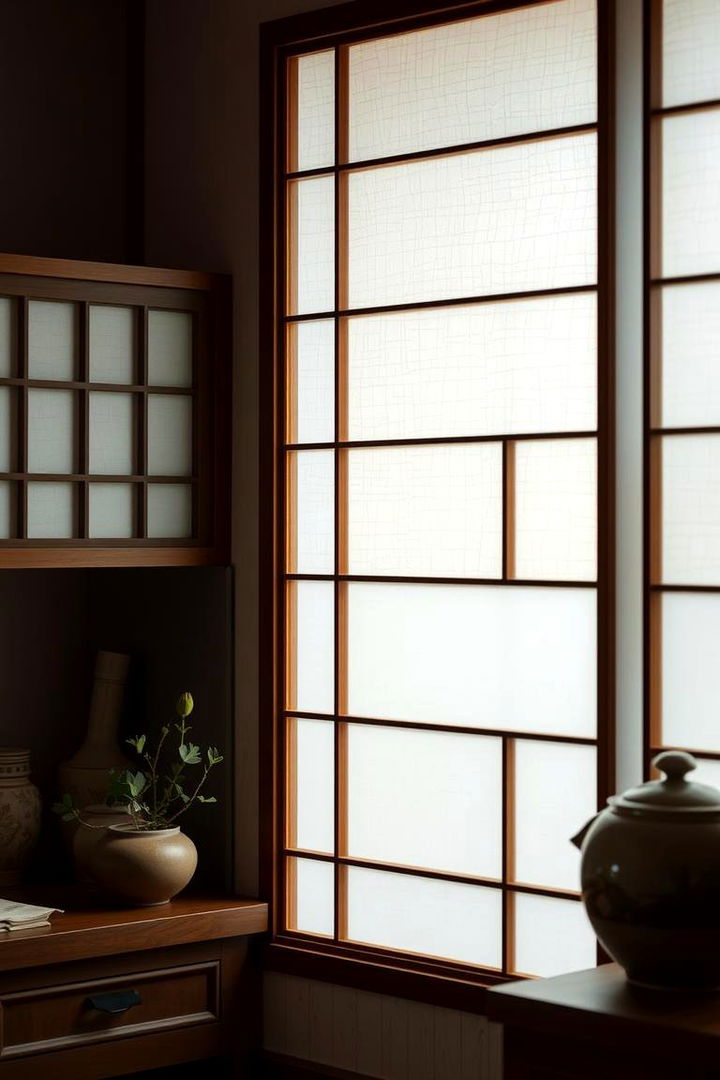
Imagine soft diffused light filtering through delicate shoji screens that create an ethereal Japanese ambiance. These traditional screens, made of translucent paper over wooden frames, carve boundaries without closing off spaces warmly. They provide visual privacy while inviting natural light to enhance every corner. Practical and aesthetically pleasing, they help define functional areas within the kitchen subtly. This blend of heritage and modern utility offers both beauty and practicality. Employing shoji elements creates a dynamic environment that is both protective and uplifting, ideal for thoughtful meal preparation.
8. Open and Airy Spaces
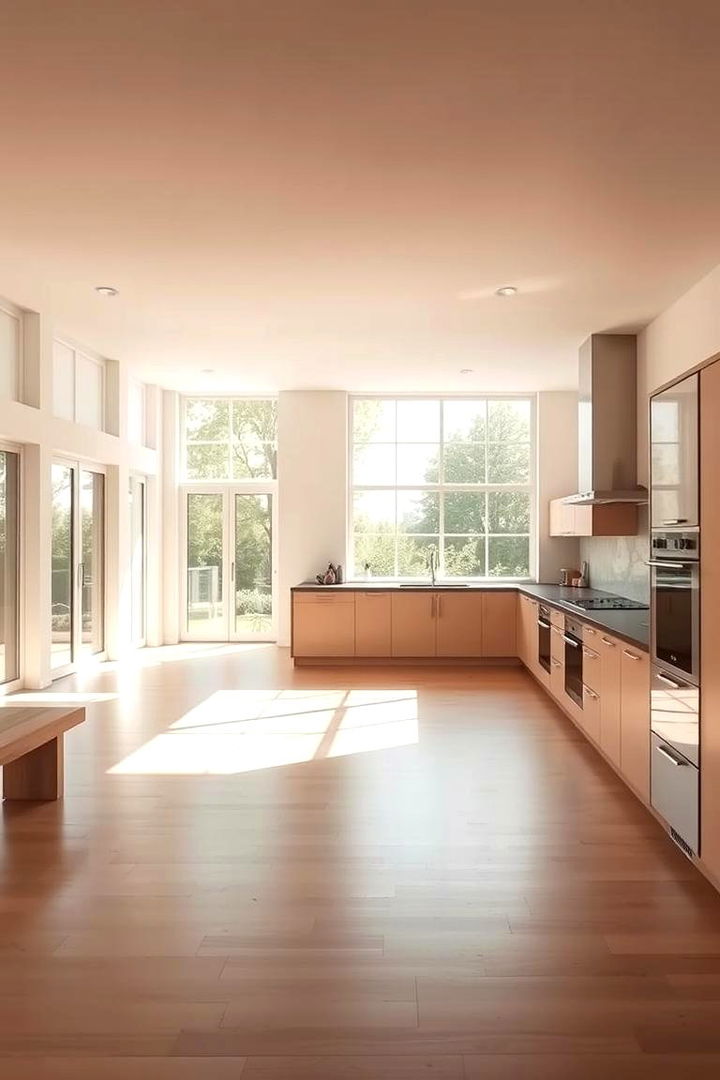
An open and airy layout is a cornerstone of Japanese style kitchens, where spaciousness encourages both practicality and serenity. Large, unobstructed spaces promote natural ventilation and seamless movement. This design facilitates easy flow from one work area to another, reducing stress during busy cooking moments. The emphasis on openness creates an inviting atmosphere where natural light floods in, making spaces appear larger and more connected to the outdoors. Homeowners appreciate the freedom and simplicity granted by such layouts, which not only enhance livability but also provide a rejuvenating escape from daily clutter.
9. Bamboo Flooring and Tatami Inspirations
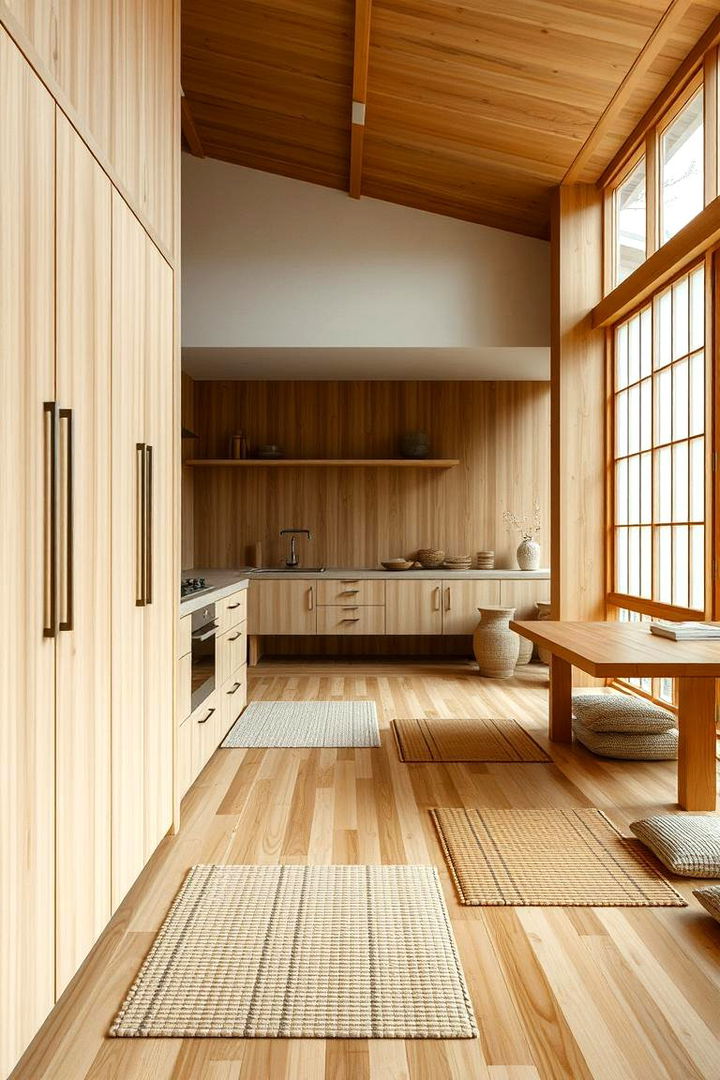
Inspired by nature’s resilience, bamboo flooring or tatami-inspired mats invite a distinctive texture beneath your feet. This versatile option offers durability, warmth, and an eco-friendly alternative to traditional flooring. Its natural grain and soft hues enhance both modern and classic kitchen settings. Offering comfort while maintaining an authentic Japanese aesthetic, these materials harmonize with minimalist design elements. They create an inviting space where traditional influences meet contemporary functionality. With features promoting sustainability, the flooring choice reflects a commitment to natural beauty and practical design, enhancing every culinary experience.
10. Functional Countertop Simplicity
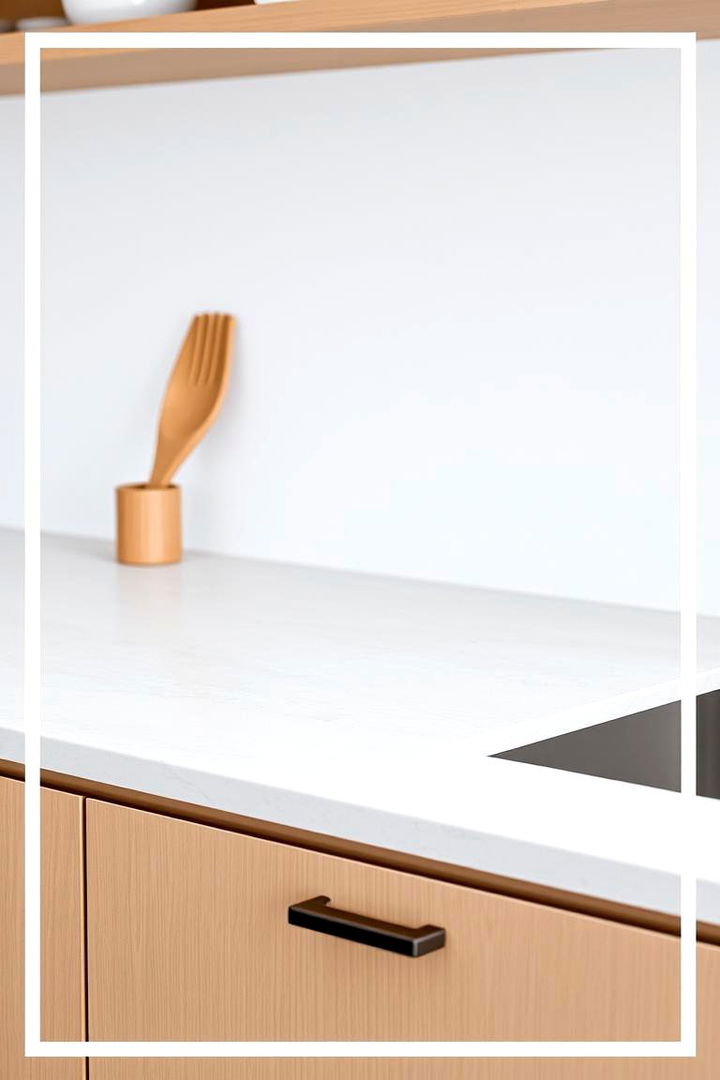
A key element in Japanese style kitchens, simple yet functional countertops provide a versatile and efficient workspace. Crafted from materials like stone or engineered quartz, these surfaces are both durable and easy to maintain. Their understated elegance complements the overall minimalistic approach while ensuring practicality during meal preparation. The smooth, clean surfaces also enhance hygienic practices. This style supports an uncluttered, organized aesthetic that encourages creativity without distraction. Homeowners value such thoughtful designs that combine visual appeal with robust functionality, making every culinary task both enjoyable and efficient.
11. Emphasis on Texture and Subtle Patterns
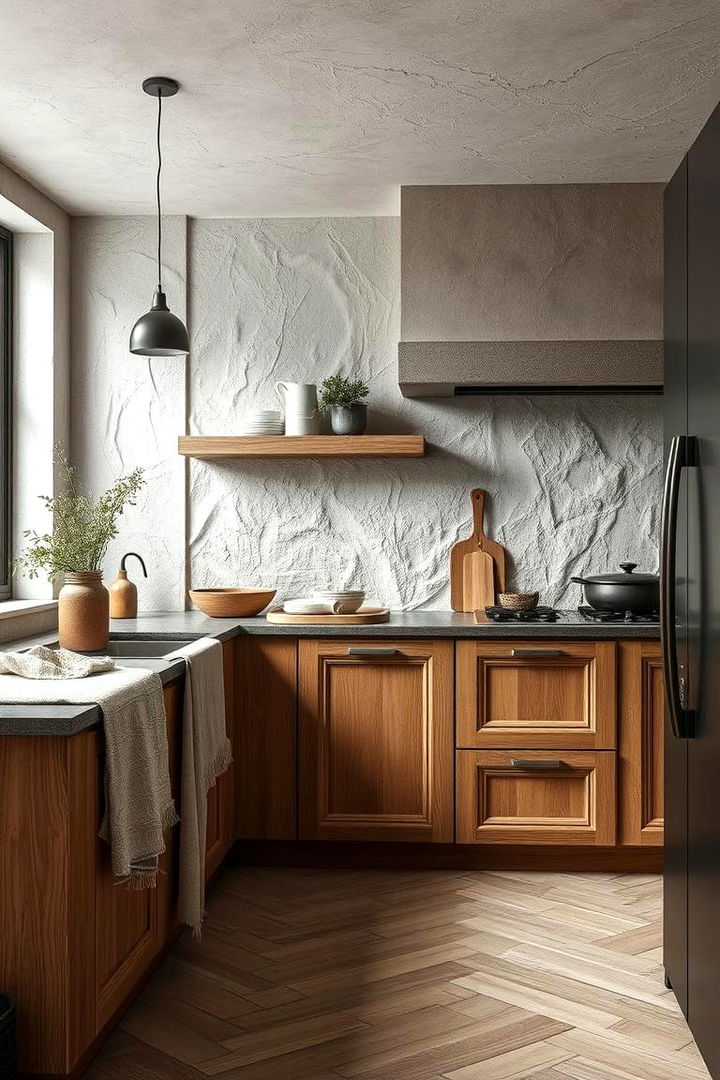
Layering textures and subtle patterns can add visual depth to a Japanese style kitchen without disrupting its harmonious simplicity. Soft textiles combine with natural surfaces to create contrasts that are both practical and appealing. These design choices evoke a warm, tactile environment, inviting a tactile exploration through different materials. Homeowners benefit from an ambiance where every glance reveals a new detail, providing a comforting balance to modern sleekness. This strategy inherently supports a relaxed mood and encourages mindful engagement with every design element, making the culinary space both dynamic and serene.
12. Incorporation of Bonsai and Greenery

A touch of nature brings vibrant life to the kitchen when bonsai trees and carefully chosen greenery are integrated into the design. Lush plants create a link between indoor and outdoor beauty, infusing the space with fresh energy and a sense of tranquility. This natural element not only purifies the air but offers visual and emotional balance. Aligning with Japanese principles, the inclusion of greenery inspires calm focus and a continual reminder of nature’s resilience. Enjoy the practical benefits of heightened mood and a unique aesthetic that seamlessly bridges modern functionality with traditional natural elements.
13. The Art of Wabi-Sabi in Kitchen Design

Embracing wabi-sabi introduces an appreciation for imperfection in the beauty of your kitchen. This philosophy finds charm in asymmetry, natural wear, and authentic textures that tell a story. Homeowners benefit from a design that encourages mindfulness and a deep connection to the passage of time. Its artistic approach celebrates the beauty of the transient and imperfect, transforming everyday details into meaningful accents. The effect is a warm, inviting space that nurtures serenity and acceptance, merging practical functionality with a timeless cultural narrative that honors life’s natural rhythms.
14. Hidden Storage Cabinets for a Sleek Look
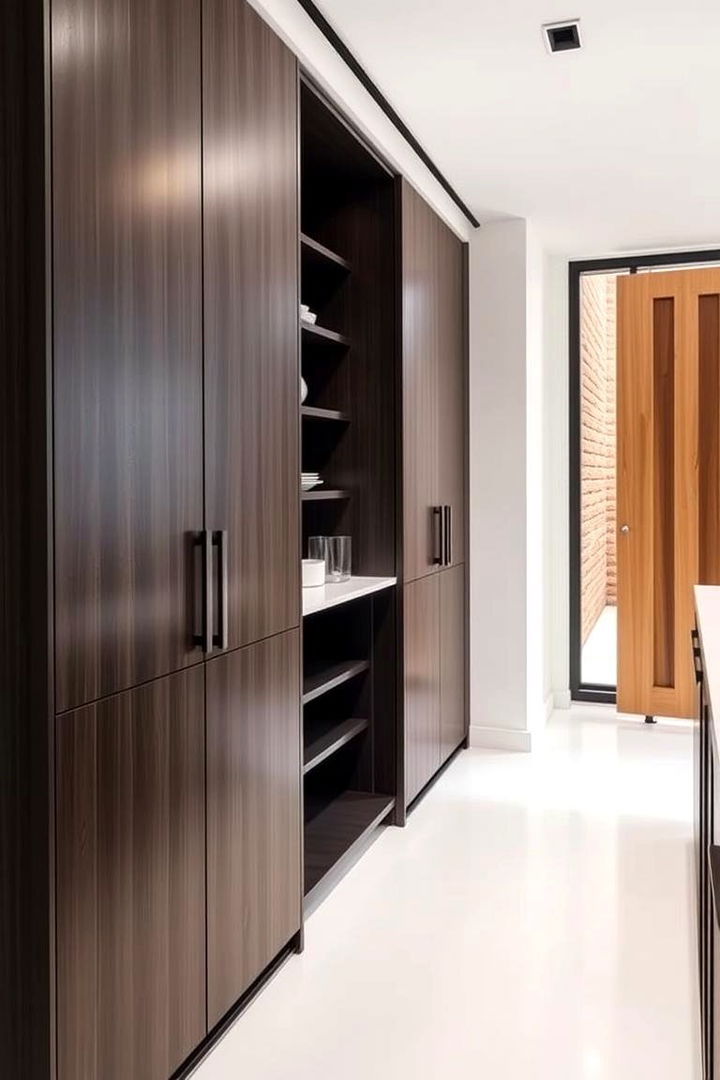
A clever design strategy involves hidden storage cabinets that conceal everyday clutter while preserving a sleek aesthetic. These discreet solutions emphasize organization and cleanliness, ensuring the kitchen remains visually calm and focused. They offer practical advantages by keeping utensils, appliances, and supplies neatly tucked away, making the space easier to maintain. This design choice fosters an environment conducive to efficient meal preparation and an uncluttered mindset. Homeowners experience elevated ease and satisfaction, as every detail serves to enhance the tranquil, modern vibe synonymous with Japanese style kitchens.
15. Modern Japanese Kitchen Lighting
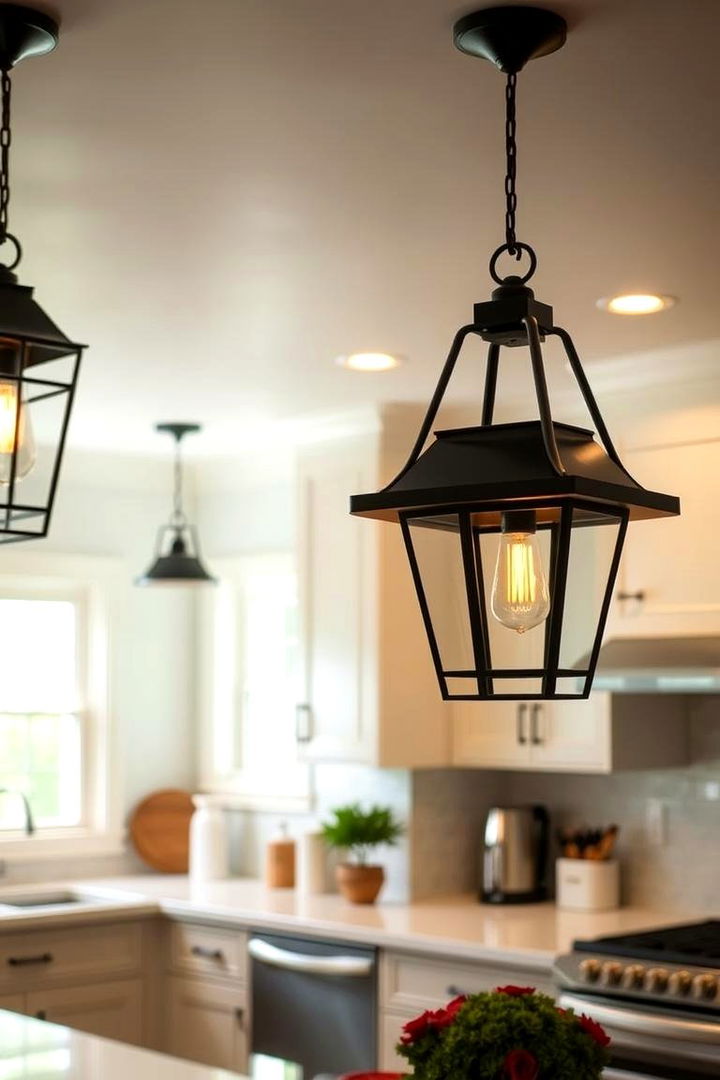
Thoughtfully designed lighting in a Japanese style kitchen sets the mood and accentuates the natural beauty of each element. Modern fixtures combine with traditional lantern concepts to create a balanced interplay of light and shadow. This strategic lighting plan not only ensures practical illumination for culinary tasks but also enhances the serene ambiance. Homeowners appreciate the layered approach where ambient, task, and accent lighting work harmoniously. The result is a space that feels both sophisticated and inviting, highlighting textures and enriching the overall aesthetic with warmth and energy during every phase of the day.
16. Smart, Compact Organization
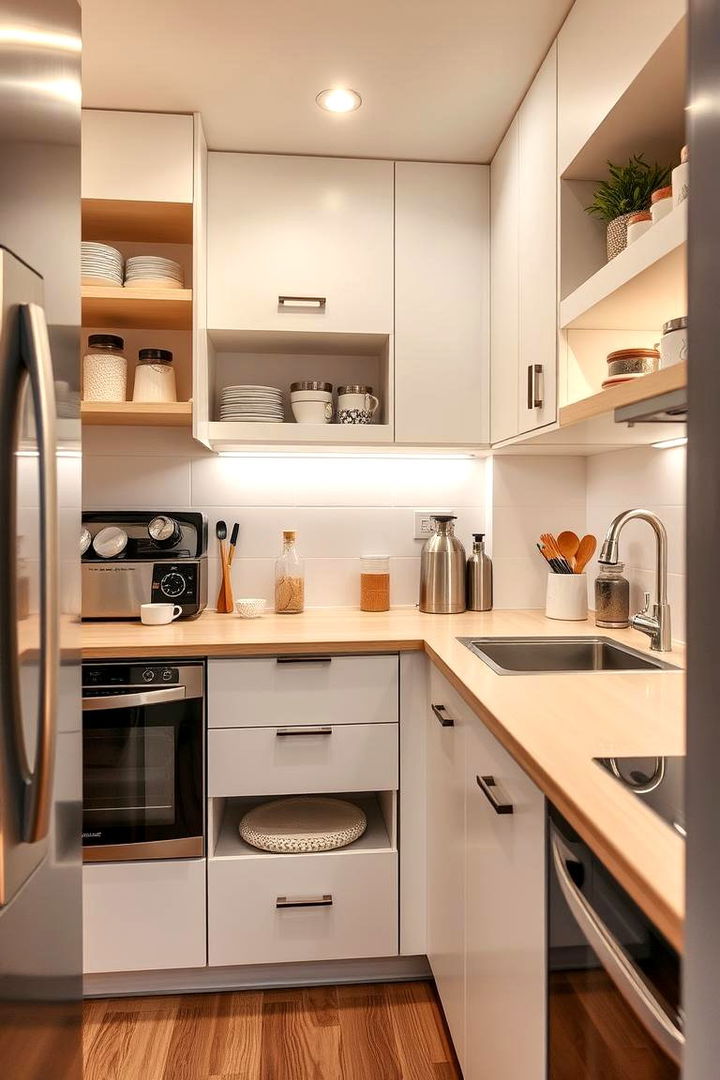
Focused on efficiency, smart and compact organization solutions maximize space while maintaining a clean and inviting environment. Every nook and cranny is thoughtfully planned to store essential kitchen items without compromising the aesthetic. This high-functioning layout supports ease of access and streamlined workflows, making cooking more enjoyable and less chaotic. The integration of sleek storage systems promotes a sense of order and calm, aligning perfectly with Japanese design principles. Homeowners ultimately benefit from reduced clutter, improved organization, and a tranquil space that emphasizes harmony between function and form.
17. Blend of Traditional and Modern Elements
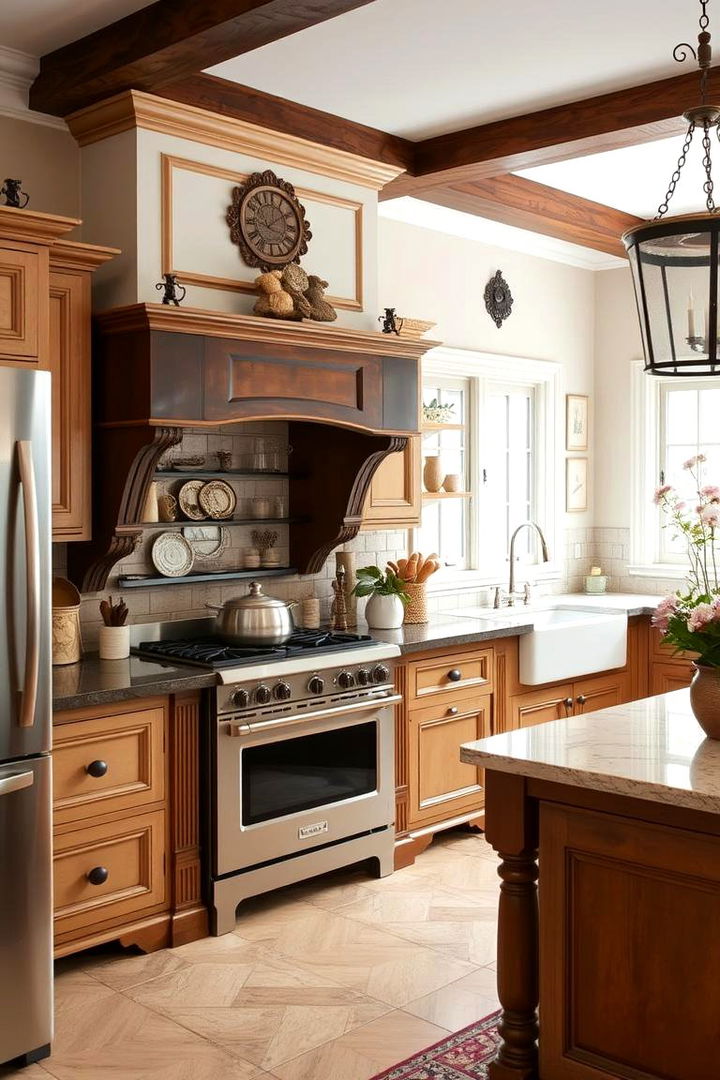
An inspiring balance emerges when traditional elements meet modern innovations in the kitchen. This blend pays homage to cultural heritage while embracing contemporary design trends. The juxtaposition of old-world charm, like handcrafted details and ornamental accents, with sleek modern appliances creates a dynamic and functional space. It offers homeowners the benefit of preserving timeless traditions while enjoying the safety and efficiency of updated technology. This harmonious fusion produces an inviting environment that captures both nostalgia and cutting-edge convenience, redefining what it means to have a truly Japanese style kitchen.
18. Outdoor-Indoor Flow in Kitchen Design
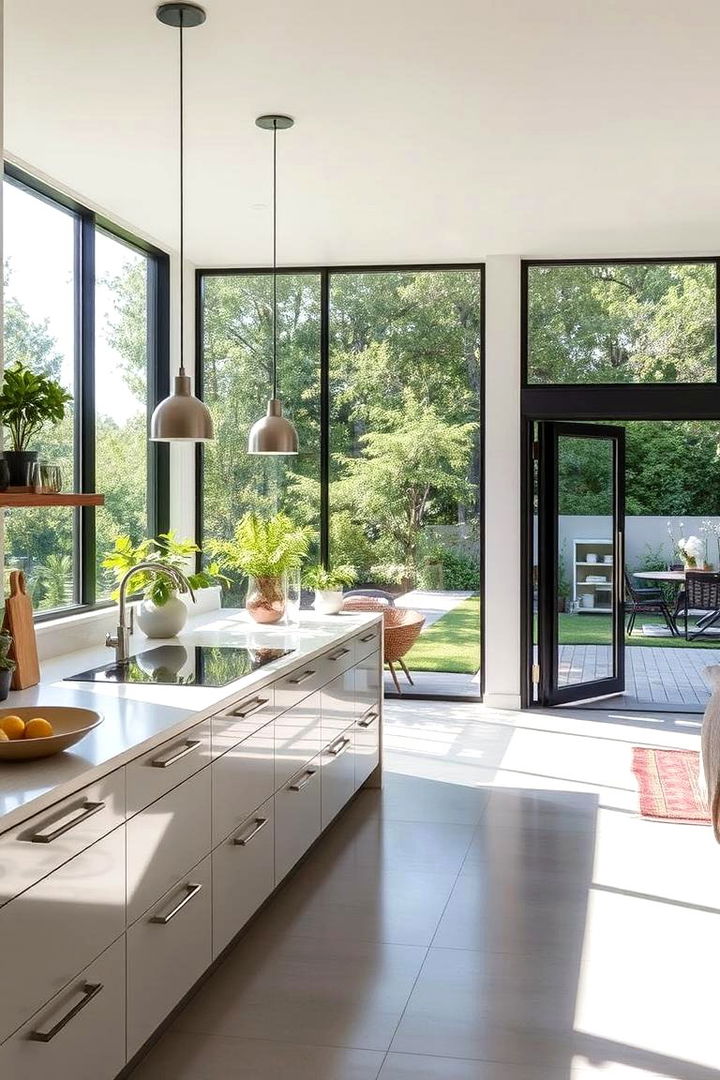
A seamless transition between indoor and outdoor spaces is a hallmark of Japanese architecture, effortlessly applied in kitchen design. Large windows, sliding doors, or even open terraces create a fresh, expansive feel. This design encourages natural light and fresh air to flow into the room, boosting energy efficiency and mood. Homeowners benefit from a versatile space that harmonizes with nature and invites outdoor elements inside. The airy design promotes an atmosphere of relaxation and a constant reminder of nature’s beauty, blending functional living with an energizing connection to the natural world.
19. Innovative Use of Limited Space
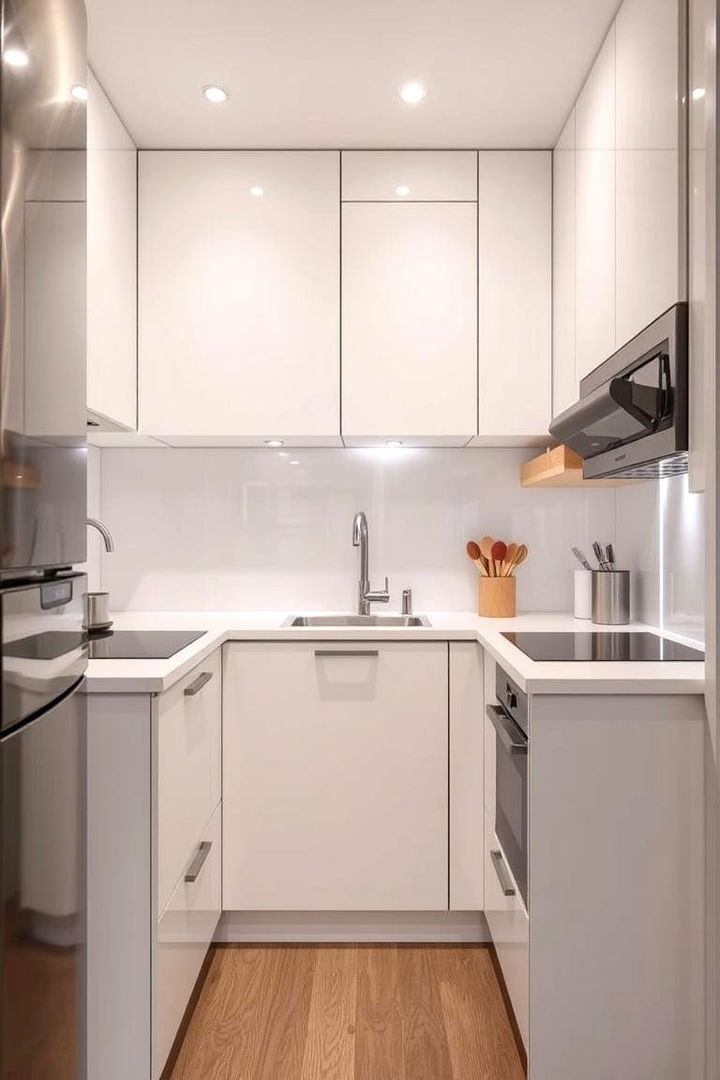
Living with limited space often spurs innovative design solutions, and Japanese style kitchens excel at optimizing every inch. Clever fixtures, multipurpose furnishings, and strategic layouts maximize functionality without sacrificing elegance. This creative approach ensures that even compact kitchens display the cultural values of simplicity and order. It inspires homeowners to think creatively about organization and efficiency while enjoying a stylish, uncluttered environment. Practical benefits include easier maintenance, enhanced flow, and a calming aesthetic that transforms small areas into bright, usable spaces without losing the essence of traditional design.
20. Accents with Japanese Ceramic Pottery
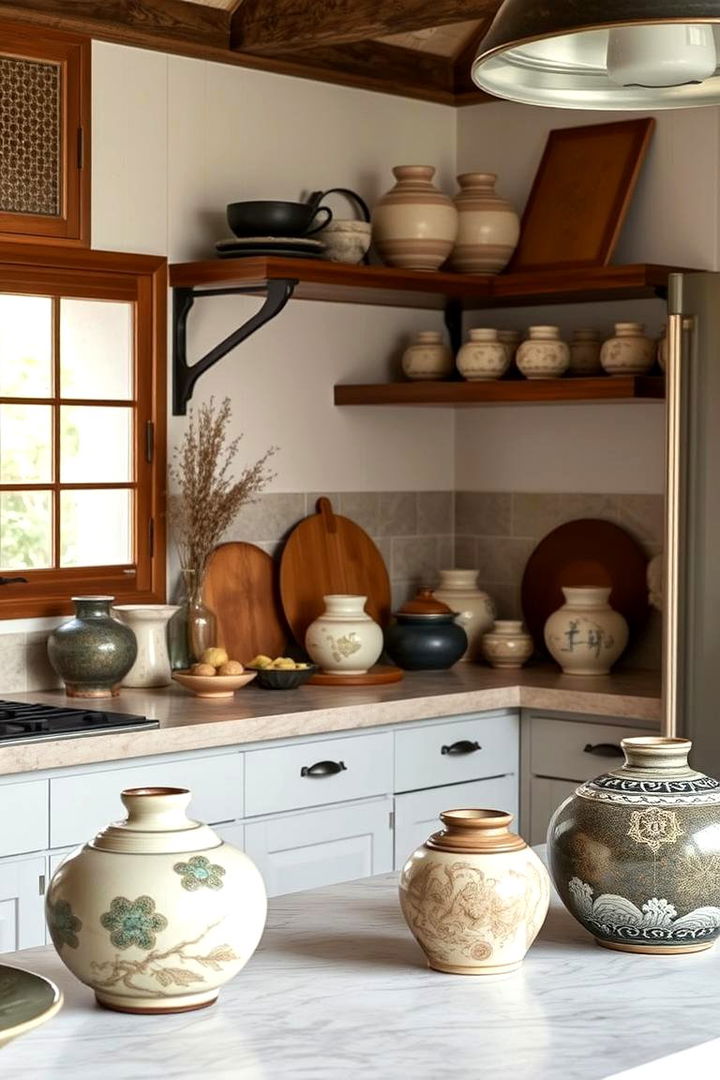
Incorporating authentic Japanese ceramic pottery adds a unique decorative flair and tactile elegance to any kitchen. These handcrafted pieces provide character and an artistic touch that elevates the space from ordinary to inspired. Their intricate textures and earthy colors complement the natural materials of the kitchen while serving a practical role in food presentation or storage. Homeowners can enjoy a blend of art and functionality that stays true to cultural tradition. This decorative strategy creates focal points that encourage conversation and artistic expression, deepening the connection between culinary craft and fine traditional artistry.
21. Focus on Clean, Uncluttered Surfaces
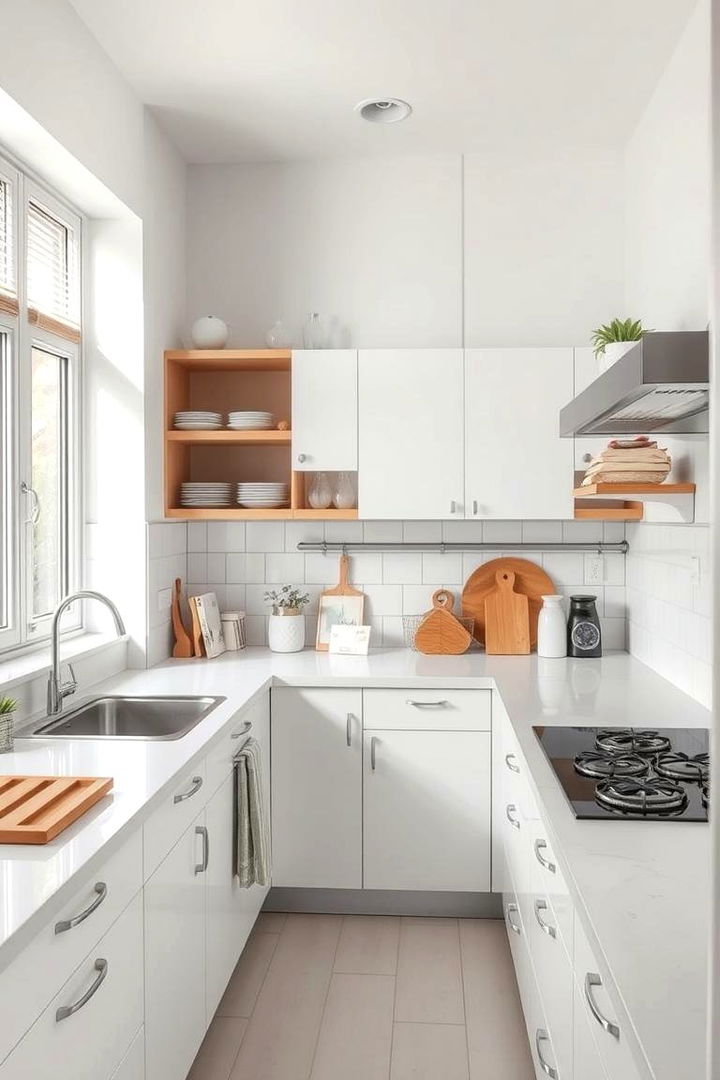
Maintaining clean, uncluttered surfaces is essential for a peaceful and efficient Japanese style kitchen. Thoughtful design elements ensure that countertops and work areas are free from unnecessary items, fostering both hygiene and visual relaxation. Such spaces empower homeowners to concentrate on culinary endeavors without distractions. The result is an organized and stress-free environment that supports productivity and calm. Every detail is meticulously planned to reduce visual chaos and promote simplicity. This design philosophy not only elevates daily routine but also mirrors the timeless principles of restraint and mindful living.
22. Subtle Use of Decorative Art Pieces
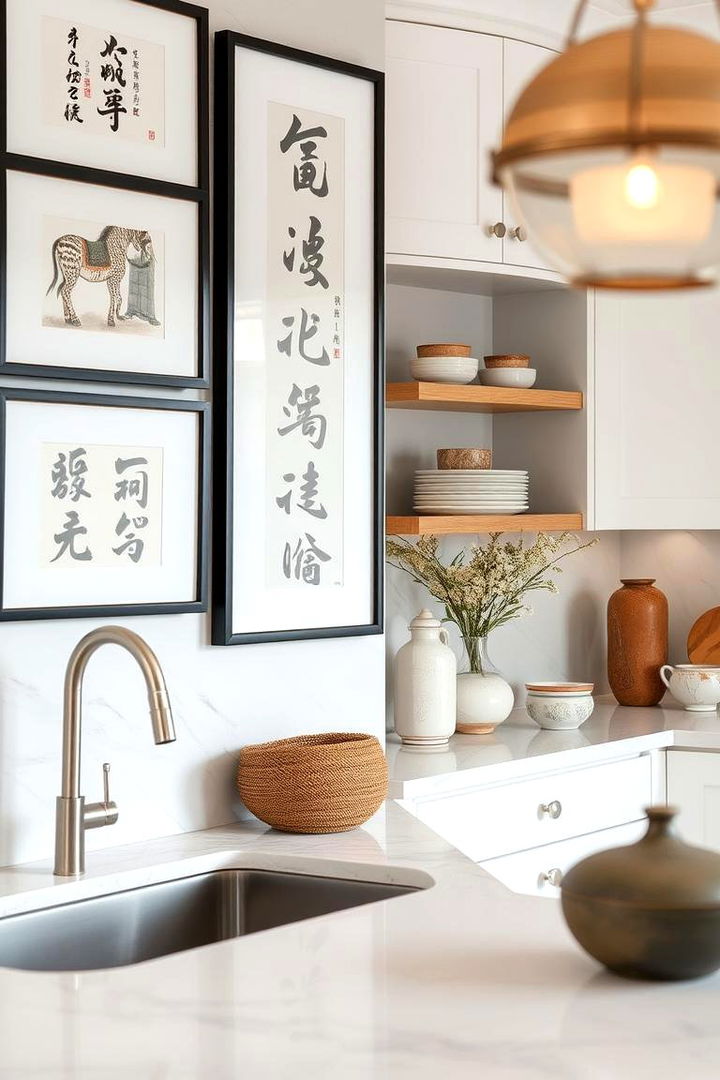
Artful accents in a Japanese style kitchen offer delicate touches that celebrate cultural heritage without overwhelming the space. Subtle decorative art pieces, such as calligraphy, ink paintings, or traditional pottery, provide a quiet focal point that invites reflection. These elements enhance the overall theme, blending beauty with practicality. Homeowners benefit from a space enriched with character and thoughtful details, ensuring that every corner tells a story. This creative expression complements the minimalist aesthetic, creating a warm, personal environment that balances function with the elegance of traditional art.
Conclusion:
Reflecting on these Japanese style kitchen ideas highlights the profound connection between simplicity, functionality, and beauty. The principles showcased encourage a mindful approach to design, where every element contributes to an environment of calm efficiency. By embracing streamlined layouts, natural materials, and artful details, you create a space that beautifully marries tradition with modern living. The practical tips and creative inspirations provided here can guide you in transforming everyday kitchens into serene sanctuaries of style and purpose. Let the spirit of Japanese design inspire you toward a more harmonious culinary space.










